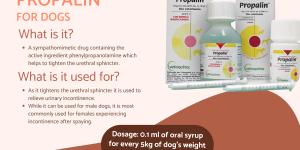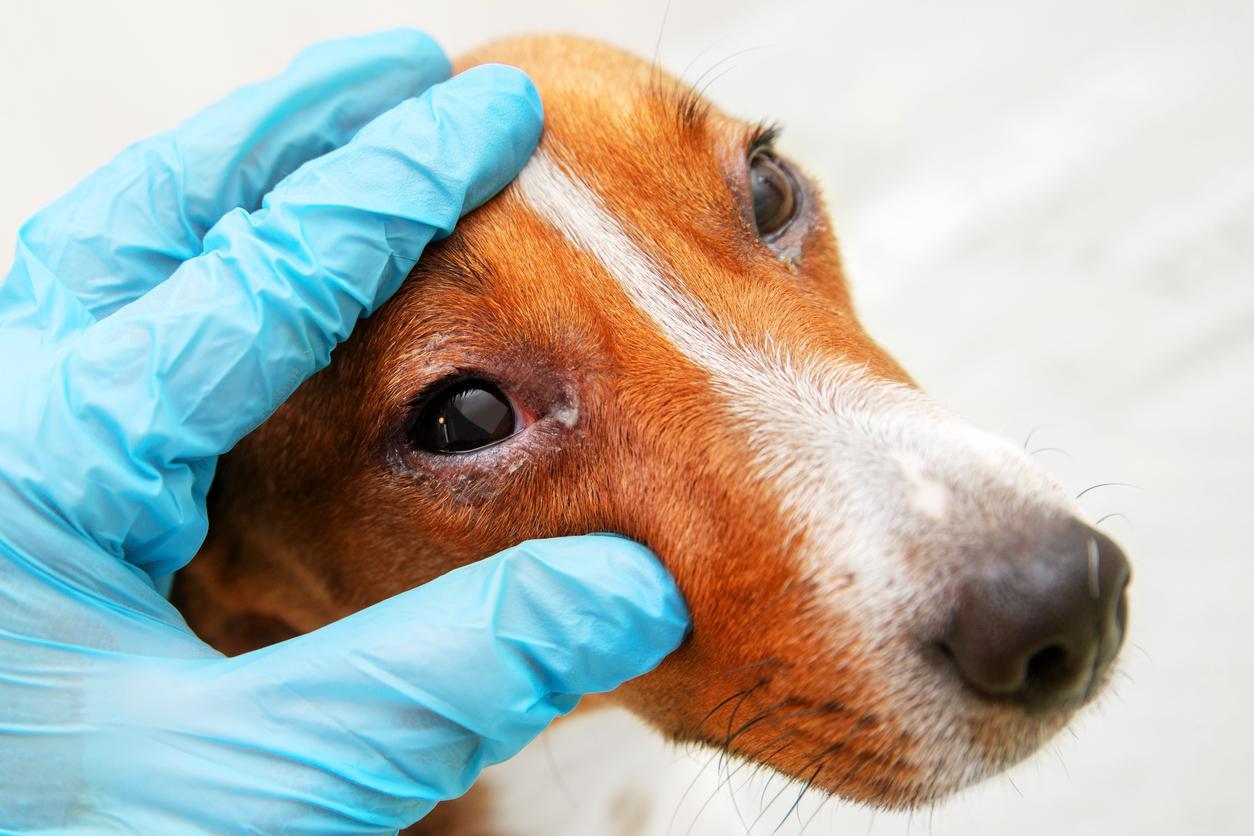Cyclosporine for Dogs - Uses and Side Effects



See files for Dogs
Cyclosporine is an immunosuppressive drug that is used to treat allergic processes and immune-mediated diseases in both human and veterinary medicine. The diseases it treats affect various organs and bodily systems. It is a drug with high efficacy and is considered safe since its side effects are usually mild and reversible. It is a relatively expensive drug, so it is not always the first choice for veterinarians when prescribing immunosuppressive therapies.
AnimalWised helps you know more about what to expect if your pet is prescribed cyclosporine for dogs. Specifically, we look at its uses, dosage and side effects, as well as its cost.
What is cyclosporine for dogs?
Also known as cyclosporin, cyclosporine is an immunosuppressive drug, meaning it acts to reduce the immune response of an organism's body. In this case, the organism is a dog. Specially it is a calcineurin inhibitor (CNI), a selective immunosuppressant that acts specifically and reversibly on T lymphocytes. By inhibiting the action of the protein phosphatase calcineurin, the T lymphocytes which are vital for immune response cannot be activated.
Cyclosporine is a highly effective and safe drug for use in dogs. While its price may vary, it is known to have a significantly higher economic cost than other immunosuppressants, such as corticosteroids for dogs.
Currently, it is available on the market in three different preparations:
- Soft capsules for oral administration
- Oral solution
- Ophthalmic ointment (eye drops)
- Injectable solution
Injectable cyclosporine is not usually sold to pet owners as it is most commonly used in clinical settings. This means it will be administered for use by qualified veterinarians, often in emergency veterinary situations.

What is cyclosporine used for in dogs?
As we have explained, cyclosporine is a powerful immunosuppressant. It acts by binding to T lymphocytes and inhibiting the production of interleukin-2 (IL-2) and other cytokines that are involved in the activation of the immune system. For this reason, cyclosporine is used as an immunosuppressive treatment in pathologies that require modulation of the functioning of the immune system, such as allergic processes and immune-mediated diseases.
Cyclosporine for dogs uses
As we have stated in the previous section, cyclosporine is used as a treatment in pathologies that require immunosuppressive therapy. Specifically, cyclosporine in dogs is used in:
- Allergic processes: it is especially indicated to treat allergic conditions such as chronic atopic dermatitis in dogs.
- Immune-mediated diseases: this group includes diseases of a very diverse nature that affect numerous organs and systems. Some of the most common are immune-mediated hemolytic anemia, inflammatory bowel disease (or IBD), perianal fistulas, immune-mediated stomatitis, immune-mediated hepatitis, immune-mediated meningoencephalitis, lupus erythematosus, conjunctivitis, immune-mediated keratitis and uveitis.
Learn more about treatment for inflammatory bowel disease in dogs with our related guide.
Cyclosporine for dogs dosage
We should never give cyclosporine to dogs without veterinary prescription. It is a prescription-only drug and cannot be purchased over the counter. Your veterinarian will determine both whether it is required for your dog and the dosage which will need to be administered. To do so, they will consider the following:
- Route of administration
- Pathology that must be treated
- Severity of the pathology
- Patient response
Dosage of oral cyclosporine for dogs
The recommended oral dose of cyclosporine for dogs in both capsule and oral solution preparations is 5 mg/kg body weight. It should always be administered at least 2 hours before or after meals.
Specifically, the dosage of oral cyclosporine is as follows:
- Initial treatment should be administered daily until clinical improvement in the animal is detected, which usually occurs within 4 weeks. If no improvement is detected after 8 weeks, treatment should be discontinued.
- Once clinical signs are controlled, the drug can be administered every other day as a maintenance dose. During this period, the veterinarian must make regular checks and adjust the dosage based on the clinical response observed.
- When the symptoms are controlled, the veterinarian may prescribe treatment every 3 or 4 days.
- When the disease is completely under control, treatment can be stopped. If clinical signs reappear, treatment can be resumed under veterinary supervision with a daily dose.
Dosage of cyclosporine eye drops for dogs
Before applying the ophthalmic ointment, the eye should be cleaned of possible traces of dirt and exudates using non-irritating solutions. After that, 1 ml of ointment should be applied to the affected eye and repeat the application every 12 hours. The duration of treatment with cyclosporine eyedrops for dogs depends on the severity of the process and the response obtained.
Cyclosporine for dogs side effects
Although all drugs have some level of risk, cyclosporine is considered a safe drug. In fact, its technical data sheet indicates that adverse reactions are usually mild and transient. They occur only on very rare occasions. Furthermore, they usually do not require interruption of treatment and usually cease spontaneously after the therapeutical administration is complete.
Despite its safety, there is a possibility of cyclosporine side effects in dogs. The most frequent adverse reactions associated with its administration are:
- Gastrointestinal disorders: anorexia, vomiting, mucous or loose stools and diarrhea.
- Lethargy or hyperactivity: this will depend on the individual dog.
- Gingival hyperplasia: most dogs treated with cyclosporine develop proliferations in the gums. However, they are not usually bothersome and disappear when the treatment is withdrawn.
- Hypertrichosis: excessive hair growth.
- Redness and swelling of the pinna: external ear swelling.
- Muscle weakness: can also lead to cramps.
- Diabetes mellitus: it has been observed very rarely and is mainly associated with the West Highland White Terrier breed.
- Redness of the eyes: blepharospasm (closing of the eye due to eye pain), conjunctivitis and eye irritation.
Contraindications of cyclosporine for dogs
Despite the effectiveness and safety of cyclosporine, there are certain situations in which its use can be counterproductive. Below, we highlight the main contraindications of cyclosporine in dogs:
- Allergy to cyclosporine or any of the drug's excipients.
- Puppies less than 6 months old or less than 2 kg in weight.
- Dogs with a clinical history of malignant tumors.
- Vaccines (either live or inactivated) should not be administered during treatment or in the two weeks before or after treatment as the drug may interfere with the effectiveness of the vaccination.
Cyclosporine crosses the placental barrier and is excreted with milk. The use of this drug in pregnant or lactating dogs is not recommended. However, when it is considered necessary, treatment with cyclosporine may be instituted in breeding dogs after a positive risk/benefit assessment carried out by a veterinarian.
Cyclosporine overdose or poisoning in dogs
Overdose or poisoning by cyclosporine in dogs can occur due to accidental ingestion of the drug or errors in administration by caregivers. Although the adverse reactions associated with overdose are not very serious, it is important to detect them in time and go to the veterinarian to establish the most appropriate treatment.
The reactions that can be observed in cases of poisoning due to doses 4 times higher than the recommended dose or due to overdose for 3 months include:
- Hyperkeratosis in the pinna
- Callouses on the foot pads
- Weight loss or decreased weight gain
- Hypertrichosis (excessive hair growth)
- Increase in erythrocyte sedimentation rate
- Reduction in the number of eosinophils
Whenever you detect any of these symptoms, do not hesitate to go to a trusted veterinarian. Although there is no specific antidote for cyclosporine, symptom management can be instituted to control the signs of cyclosporine poisoning in dogs. Symptoms are generally reversible within 2 months.
In any case, remember the importance of keeping any medicinal product away from your animals and carefully following the guidelines established by your veterinarian. This will be the easiest way to avoid cases of cyclosporine overdose or poisoning.

How much does cyclosporine for dogs cost?
The cost of cyclosporine will vary according to many factors, with the country of residence being particularly important. This is because different countries and even regions within countries have their own regulations. For example, a month's supply of cyclosporine can cost anywhere from $50 to $150 in the US. This is due to factors such as:
- Manufacturing process: a complex synthesis is required which can be costly.
- Drug patents: sometimes protections over patents can raise prices.
- Efficacy: the drug may take longer to work than others, so costs increase.
- Monitoring: the need to follow up on the drug's efficacy can be costly in veterinary appointments.
For this reason, the use of other immunosuppressant drugs may be used instead of cyclosporine. Cyclosporine is often only used when the use of other drugs is problematic or increases health risks.
Learn about another drug often used for autoimmune diseases in dogs with our article on methylprednisone for dogs.
This article is purely informative. AnimalWised does not have the authority to prescribe any veterinary treatment or create a diagnosis. We invite you to take your pet to the veterinarian if they are suffering from any condition or pain.
If you want to read similar articles to Cyclosporine for Dogs - Uses and Side Effects, we recommend you visit our Medicine category.
- Spanish Agency for Medicines and Health Products (AEMPS). Technical sheet or summary of product characteristics: Optimmune ophthalmic ointment. https://cimavet.aemps.es/cimavet/pdfs/es/ft/1054+ESP/FT_1054+ESP.pdf
- Spanish Agency for Medicines and Health Products (AEMPS). Technical sheet or summary of product characteristics: Atopica 100 mg/ml oral solution for cats and dogs. https://cimavet.aemps.es/cimavet/pdfs/es/ft/2367+ESP/FT_2367+ESP.pdf
- Spanish Agency for Medicines and Health Products (AEMPS). Technical sheet or summary of product characteristics: Atopica 100 mg soft capsules for dogs. https://cimavet.aemps.es/cimavet/pdfs/es/ft/1524+ESP/FT_1524+ESP.pdf







